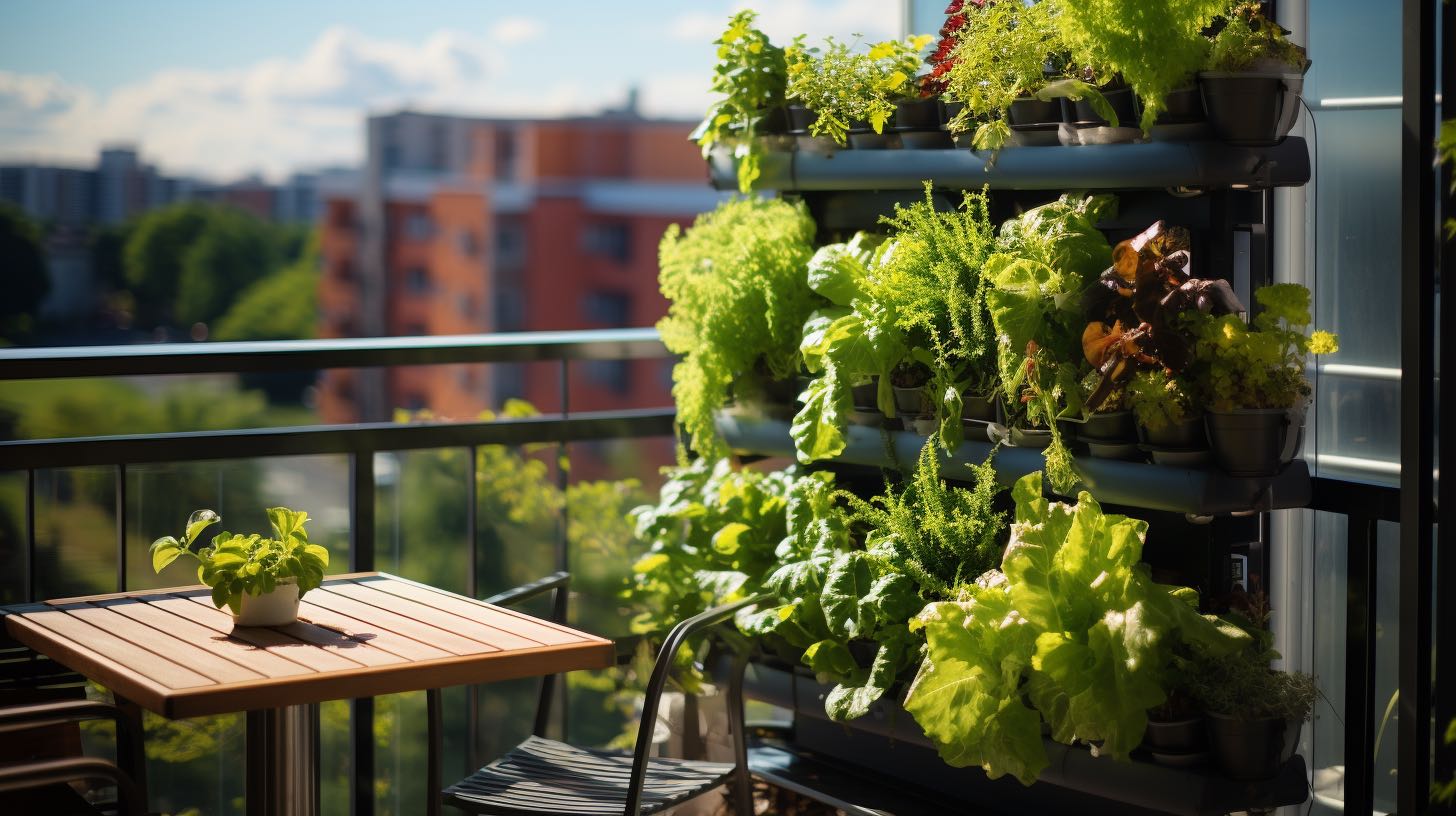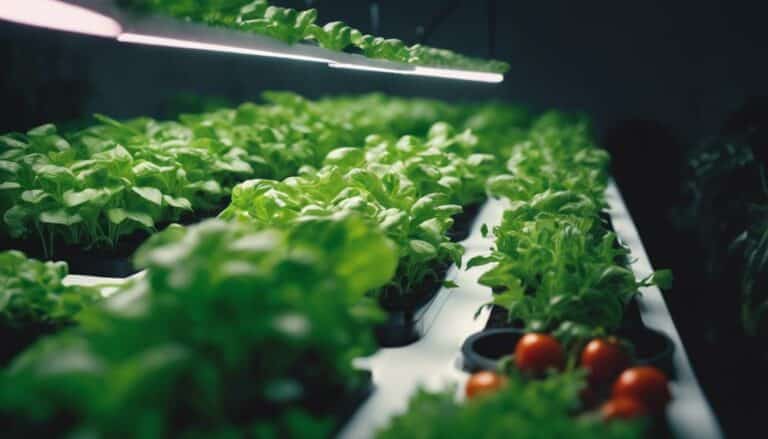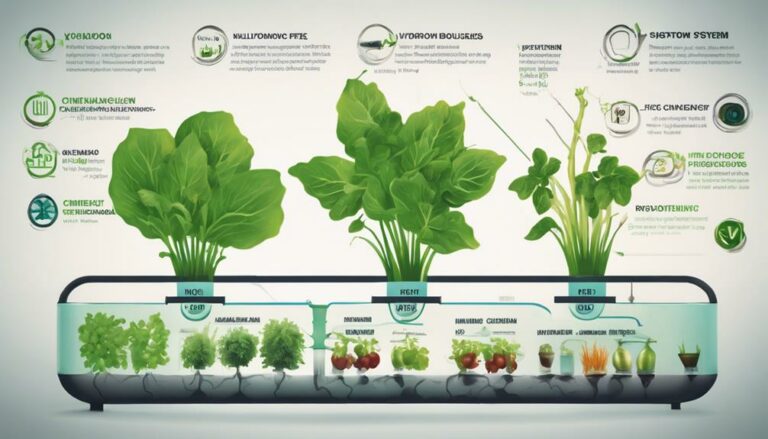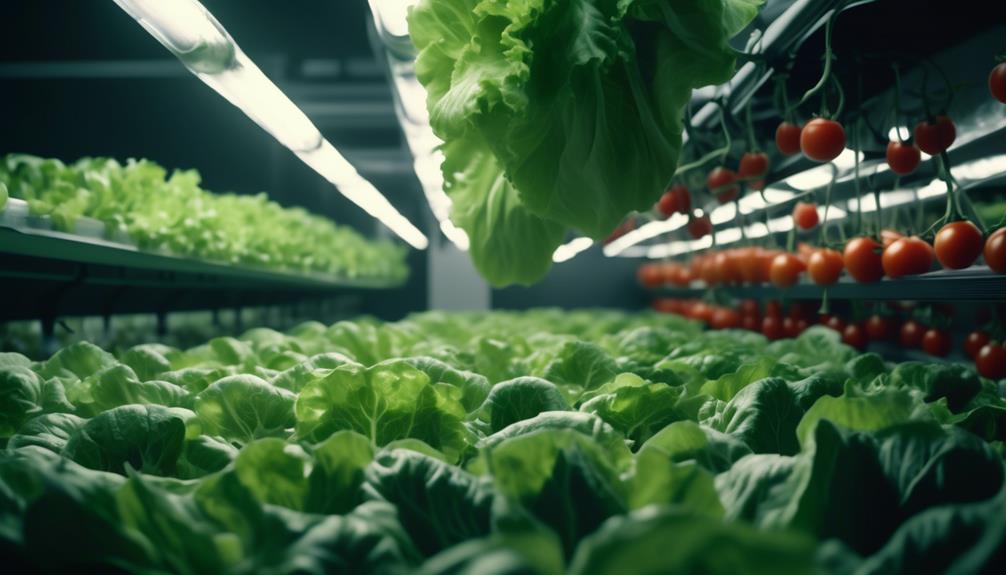Hello, fellow gardening enthusiasts! If you’ve ever dreamed of cultivating lush, thriving plants right in the comfort of your own home, you’re in for an exciting journey. Welcome to our comprehensive guide on creating your very own Vertical Hydroponic System, where the magic of hydroponics meets the thrill of DIY gardening.
Table of Contents
Introduction
In a world where space is at a premium and the desire for fresh, pesticide-free produce is on the rise, vertical hydroponic systems have emerged as a game-changer. These innovative setups allow you to grow a wide range of crops vertically, using minimal space while conserving water and minimizing the risk of pests and diseases.
Now, you might be wondering, “What exactly is hydroponics?” It’s a method of growing plants without soil, instead, they thrive in a nutrient-rich water solution. And the best part? You don’t need a green thumb or acres of land to embark on this gardening adventure.
In this guide, we’ll take you by the hand and lead you through each step of the process, ensuring that your journey into the world of vertical hydroponics is not only fruitful but also enjoyable. Whether you’re a seasoned gardener looking for a new challenge or a newbie eager to explore the possibilities, we’ve got you covered.
We’ll delve into the benefits of vertical hydroponic systems, help you choose the perfect location for your setup, guide you through the assembly of your DIY system, and provide insights on selecting the ideal plants. We’ll demystify the world of nutrient solutions, pH levels, and maintenance, making sure you nurture your plants with care and precision.
By the time we’re through, you’ll not only have a thriving vertical garden but also a newfound appreciation for the wonders of hydroponics. So, grab your gardening gloves, roll up your sleeves, and let’s embark on this exciting journey together as we unlock the secrets of successful vertical hydroponic gardening. Your homegrown, pesticide-free produce awaits!
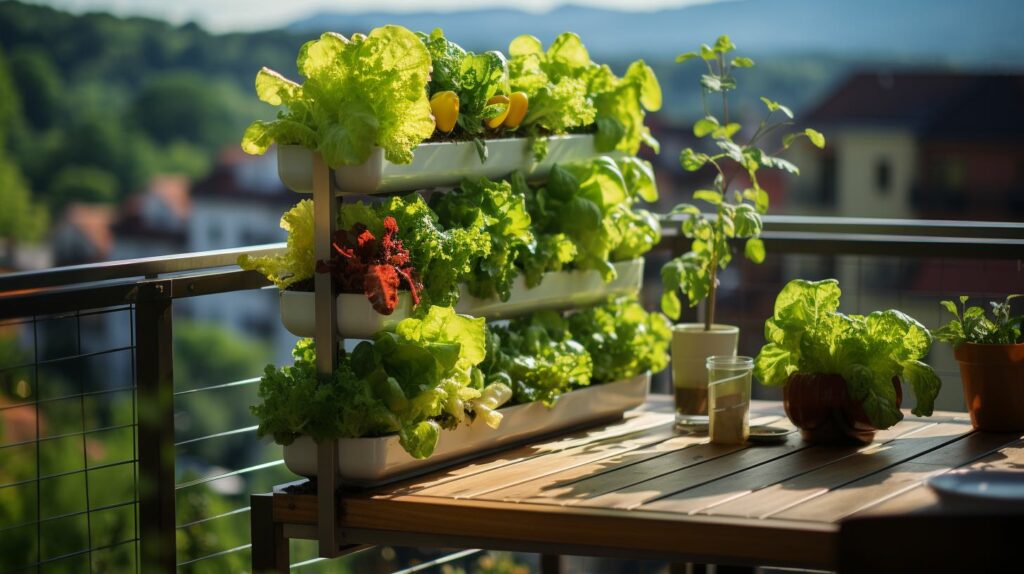
Benefits of Vertical Hydroponic Systems
Vertical hydroponic systems have captured the imagination of gardeners and urban agriculture enthusiasts for several compelling reasons. In this section, we will explore these benefits in detail, shedding light on why vertical hydroponics is revolutionizing the way we grow plants.
1. Space Efficiency
Vertical hydroponic systems are a godsend for those with limited gardening space. In urban environments where every square foot counts, these systems allow you to maximize vertical space. By growing upwards instead of outwards, you can cultivate a remarkable number of plants in a relatively small area. Whether you have a balcony, a rooftop, or even just a tiny courtyard, vertical hydroponics can turn it into a flourishing garden.
2. Water Conservation
One of the most significant advantages of hydroponic systems, vertical or otherwise, is their efficient use of water. Traditional soil-based gardening can be water-intensive, often leading to wastage. In contrast, hydroponics recirculates water, which means you use significantly less than in conventional gardening. Some estimates suggest that hydroponic systems can save up to 90% of the water used in traditional gardening. In an era of increasing water scarcity, this eco-friendly approach is a powerful argument for adopting vertical hydroponics.
3. Pest and Disease Control
Vertical hydroponic systems elevate your plants, keeping them off the ground and out of reach of many soil-borne pests and diseases. In traditional gardening, pests like snails and soil-dwelling insects can wreak havoc on your crops. By growing vertically, you can significantly reduce the risk of infestations, thus minimizing the need for chemical pesticides. This not only makes your gardening efforts more sustainable but also contributes to healthier, chemical-free produce.
4. Versatility in Crop Selection
Vertical hydroponic systems offer versatility when it comes to choosing what to grow. Since plants aren’t confined to the limitations of soil, you can experiment with a wide range of crops. From aromatic herbs and leafy greens to succulent strawberries and even small fruiting plants, the possibilities are nearly endless. This flexibility allows you to diversify your harvest, leading to an array of flavors and culinary delights.
5. Year-Round Gardening
Vertical hydroponic systems provide the perfect environment for year-round gardening. With control over temperature, humidity, and lighting, you can create an optimal growing environment, regardless of the weather outside. Say goodbye to seasonal limitations and hello to fresh, homegrown produce whenever you desire.
6. Rapid Growth and High Yields
Plants grown in hydroponic systems tend to grow faster and produce higher yields compared to their soil-grown counterparts. The precise control over nutrient delivery and environmental conditions ensures that your plants receive everything they need for robust growth. This means you can enjoy a bountiful harvest in less time.
7. Sustainable and Eco-Friendly
Vertical hydroponics align with sustainable and eco-friendly gardening practices. By using less water, reducing chemical usage, and maximizing space, these systems have a lower environmental footprint compared to traditional gardening. Plus, the absence of soil erosion helps protect valuable topsoil, contributing to overall ecological conservation.
Space Efficiency in Vertical Hydroponic Systems
One of the most alluring aspects of vertical hydroponic systems is their remarkable space efficiency. In this section, we’ll delve into why this efficiency matters and how vertical hydroponics makes the most of every square inch.
Maximizing Vertical Space
In traditional gardening, we often think in terms of horizontal square footage. However, with vertical hydroponics, we shift our perspective upward. These systems are ingeniously designed to utilize the vertical dimension, making them a game-changer for gardeners dealing with limited space.
1. Perfect for Urban Environments
In bustling cities and densely populated areas, outdoor space is a precious commodity. Balconies, patios, and rooftops often offer limited room for gardening. This is where vertical hydroponic systems shine. They can be customized to fit virtually any available vertical surface, from walls to fences to standalone structures. Even in the smallest urban settings, you can transform a drab wall into a vibrant living garden.
2. Multiple Levels of Growth
Vertical hydroponic systems consist of stacked layers or shelves, each hosting a series of plants. This tiered approach enables you to cultivate several crops in the same footprint that would traditionally accommodate only a few. Picture a bookshelf filled with flourishing herbs, or a wall adorned with cascading rows of vibrant greens. The possibilities are as diverse as your imagination.
3. Efficient Use of Space
Traditional soil-based gardening often involves generous spacing between plants to allow for root expansion and access to nutrients. In contrast, hydroponic systems provide precise nutrient delivery directly to the plant roots. This eliminates the need for excess space between plants, allowing you to grow more in less space.
4. Customizable and Scalable
Another advantage of vertical hydroponic systems is their adaptability. Whether you have a small corner in your kitchen or an entire greenhouse, you can tailor your system to fit your available space. Start with a compact setup and expand as your gardening ambitions grow. With vertical hydroponics, your garden’s size is limited only by your creativity and available vertical surfaces.
5. Aesthetic Appeal
Beyond their practical benefits, vertical hydroponic systems add a touch of green elegance to your living spaces. They transform bland walls and empty corners into eye-catching displays of thriving vegetation. These systems are not just functional; they’re also a form of living art, enhancing the aesthetics of your home or garden.
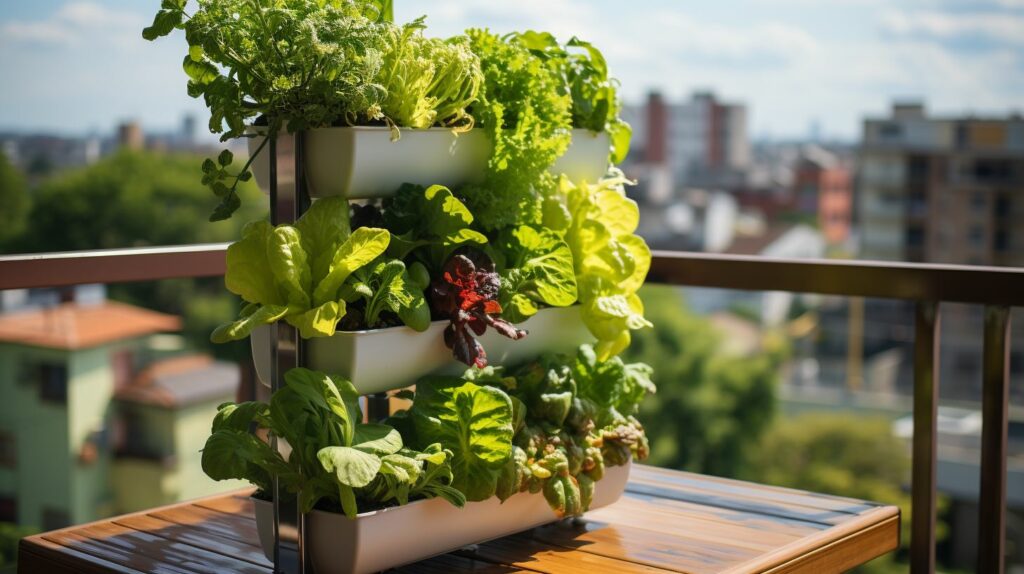
Water Conservation in Vertical Hydroponic Systems
Water is a precious resource, and conserving it is crucial for a sustainable future. Vertical hydroponic systems offer a compelling solution to minimize water wastage in gardening. In this section, we will explore how these systems excel in water conservation and why it matters.
1. Recirculating Nutrient Solution
At the heart of hydroponics lies the recirculating nutrient solution. Unlike traditional soil-based gardening, where water is absorbed by the soil and may be lost through runoff or evaporation, hydroponics reuses water efficiently. The nutrient-rich solution is continually recirculated through the system, providing plants with the water they need while minimizing waste.
2. Reduced Evaporation
In traditional gardening, exposed soil can lead to significant water loss through evaporation, especially in hot climates. In vertical hydroponic systems, the growing medium and nutrient solution are enclosed, significantly reducing the potential for water to evaporate into the atmosphere. This means more of the water you provide goes directly to your plants’ roots.
3. Precise Water Delivery
Vertical hydroponic systems deliver water and nutrients directly to the plant roots. There’s no need to saturate large volumes of soil, as is the case in traditional gardening. This precision in water delivery ensures that each plant receives exactly what it needs, eliminating excess water usage.
4. Water Efficiency in Closed Systems
Some advanced hydroponic systems are designed as closed-loop systems, where any excess water that drains from the plants is captured and returned to the reservoir. This closed-loop approach minimizes water wastage and ensures that virtually no water is lost.
5. Drought Resistance
Vertical hydroponic systems can be particularly valuable in regions prone to drought. Since these systems use significantly less water than traditional gardens, they offer a way to grow crops even when water resources are scarce. This drought resistance can be a game-changer for ensuring food security in water-scarce areas.
6. Sustainability and Environmental Impact
Water conservation isn’t just about saving resources; it’s also about reducing environmental impact. By using water efficiently, vertical hydroponic systems help decrease the strain on freshwater sources and reduce the energy required for irrigation. This aligns with broader sustainability goals and contributes to a greener, more eco-conscious approach to gardening.
7. Cost Savings
In addition to environmental benefits, water conservation in vertical hydroponics can translate to cost savings for gardeners. By using less water and reducing the need for expensive irrigation systems, hydroponic gardening can be a financially smart choice in the long run.
Pest and Disease Control in Vertical Hydroponic Systems
One of the standout advantages of vertical hydroponic systems is their inherent ability to reduce the risk of pests and diseases that can plague traditional soil-based gardening. In this section, we’ll delve into how these systems provide a protective shield for your plants and offer a sustainable, chemical-free approach to pest and disease control.
1. Elevation as a Natural Barrier
Vertical hydroponic systems elevate your plants off the ground, creating a physical barrier that deters many common garden pests. Ground-dwelling insects like snails, slugs, and soil-borne nematodes struggle to reach your precious crops when they’re suspended in the air. This elevated positioning is your first line of defense against these troublesome critters.
2. Reduced Contact with Soil
Traditional gardening in soil exposes plants to a host of diseases and pests that reside in the earth. Vertical hydroponics eliminates this direct contact with soil, significantly lowering the risk of soil-borne pathogens and pests. Root rot, a common problem in soil, becomes a non-issue in hydroponic systems.
3. Limited Access for Crawling Insects
Many pests rely on crawling to reach their target plants. Vertical hydroponic systems create physical obstacles, making it difficult for insects to crawl up to your crops. This reduces the need for chemical pesticides, ensuring your produce remains chemical-free and safe to consume.
4. Improved Air Circulation
Proper air circulation is crucial for preventing the development and spread of diseases in plants. Vertical hydroponic systems naturally promote air circulation around each plant, reducing the humidity that pathogens thrive in. This creates an environment less conducive to disease development.
5. Prudent Use of Pesticides
In traditional gardening, pest and disease control often necessitates the use of chemical pesticides and herbicides. In vertical hydroponic systems, the reduced pest and disease pressure mean you can employ more targeted and less harmful methods of control if necessary. This includes options such as organic sprays or beneficial insects like ladybugs and predatory mites.
6. Isolation of Infected Plants
Should a pest or disease issue arise in your vertical hydroponic system, it’s easier to isolate and treat affected plants promptly. This prevents the problem from spreading to the entire garden, minimizing potential losses.
7. Sustainable and Chemical-Free Gardening
Vertical hydroponics aligns with sustainable and organic gardening practices. By reducing the need for chemical pesticides, you create a healthier, safer environment for both your plants and the ecosystem. This chemical-free approach also leads to produce that’s free from pesticide residues, promoting better health for you and your family.
8. Consistency in Crop Quality
With fewer pests and diseases to contend with, your crops are likely to thrive consistently. You can expect higher-quality produce that’s not marred by blemishes or damage, enhancing the overall appeal of your homegrown harvest.
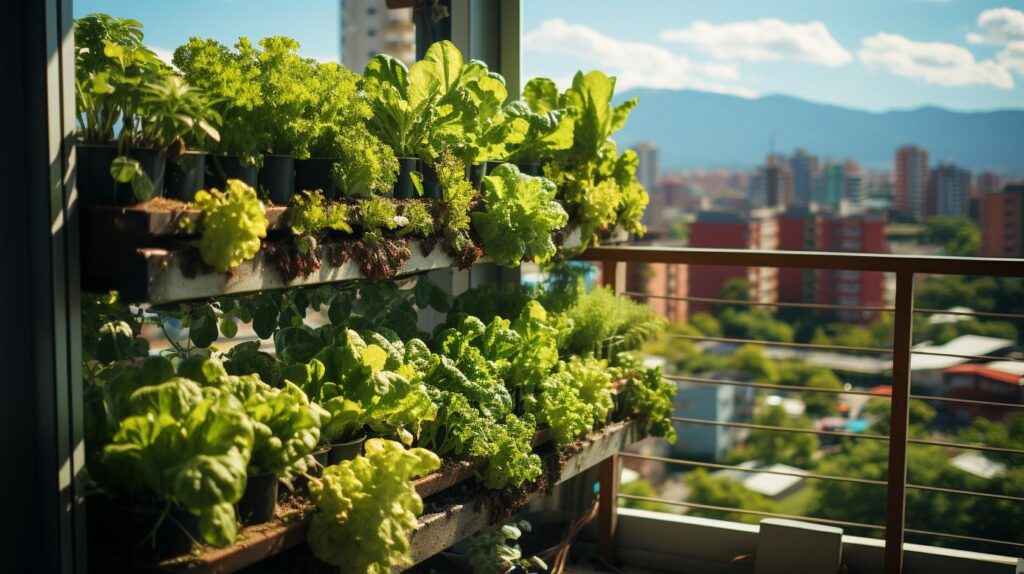
Diverse Crop Variety in Vertical Hydroponic Systems
Vertical hydroponic systems open the door to a world of horticultural possibilities, allowing you to grow an astonishing array of crops in a single gardening space. In this section, we’ll explore the exciting diversity of crops that thrive in these systems, highlighting the flexibility and potential for culinary experimentation.
1. Leafy Greens and Herbs
Vertical hydroponics is synonymous with leafy greens and herbs. From vibrant spinach and kale to aromatic basil and cilantro, these systems provide an ideal environment for a wide range of leafy and herbaceous plants. Imagine plucking fresh greens and herbs for your salads and culinary creations right from your vertical garden.
2. Tomatoes and Peppers
Tomatoes and peppers, both classic garden favorites, flourish in vertical hydroponic setups. Their upward growth habit lends itself well to vertical gardening, and you’ll be rewarded with plump, juicy tomatoes and colorful peppers that thrive in the controlled hydroponic environment.
3. Cucumbers and Zucchinis
Vining crops like cucumbers and zucchinis may seem like they need a lot of space, but in a vertical hydroponic system, they can flourish with the right support. Vertical growth ensures ample air circulation and makes harvesting a breeze, providing you with a continuous supply of these delicious vegetables.
4. Strawberries
Few experiences rival the joy of plucking ripe, juicy strawberries straight from the vine. Vertical hydroponic systems provide an excellent platform for growing strawberries, allowing you to enjoy sweet, sun-kissed berries in any space, regardless of soil quality.
5. Microgreens
For those who love gourmet greens, microgreens are a delightful addition to vertical hydroponic gardens. These tiny, nutrient-packed greens can be harvested just a few weeks after planting, adding a burst of flavor and color to your dishes.
6. Culinary and Medicinal Herbs
Vertical hydroponics is an herb enthusiast’s dream come true. Grow a diverse selection of herbs, from thyme and oregano to mint and lavender. These aromatic treasures not only enhance your culinary creations but also provide a source of fresh herbs for home remedies and teas.
7. Edible Flowers
Vertical gardens can be as visually appealing as they are productive. Consider adding edible flowers like nasturtiums, pansies, and violets to your vertical hydroponic system. These blooms are not only beautiful but also add a touch of elegance to salads and desserts.
8. Unique Varieties
Vertical hydroponics provides a platform for experimenting with unique and exotic plant varieties. Grow colorful Swiss chard varieties, exotic Asian greens, or even dwarf fruit trees if you have the space. The controlled environment of hydroponics allows you to venture into the realm of botanical curiosity.
9. Seasonal Delights Year-Round
With vertical hydroponics, you can enjoy seasonal delights year-round. Grow cool-weather crops during the winter and tropical treats in the summer, all within the same garden space. This ensures a continuous supply of fresh produce, regardless of the external climate.
Choosing the Right Location
Before diving into the DIY aspect, it’s essential to select the right location for your vertical hydroponic system. Consider factors like sunlight, accessibility, and proximity to a water source. Ideally, you’ll want a spot that receives at least 6-8 hours of sunlight daily.
Building Your Vertical Hydroponic System
Materials Needed
To get started, gather the following materials:
- PVC pipes or gutters
- End caps and connectors
- A submersible water pump
- A reservoir (container)
- Growing medium (hydroton, coco coir, or perlite)
- Net pots or cups
- Nutrient solution
Assembling the Frame
Begin by assembling the frame for your vertical system. Depending on your space, you can create a freestanding structure or attach it to a wall. Make sure it’s sturdy and can support the weight of the plants and tubes.
Setting up the Reservoir
The reservoir holds your nutrient solution. Place it at the base of your system and ensure it’s level. Install the submersible water pump in the reservoir, connecting it to a timer.
Installing the Growing Tubes
Next, cut your PVC pipes or gutters into sections that will serve as growing tubes. Attach end caps to seal them and drill holes for the net pots. Arrange these tubes vertically, ensuring a slight slope for the nutrient solution to flow.
Selecting the Ideal Plants
Now that your system is set up, it’s time to choose the plants you want to grow. Leafy greens, herbs, and small fruiting plants like strawberries are excellent choices for vertical hydroponics. Ensure you select varieties that thrive in hydroponic environments.
Nutrient Solution and Maintenance
Mixing Nutrient Solution
Create a nutrient solution by following the manufacturer’s instructions. This solution provides essential nutrients to your plants. Regularly check and adjust the mixture to maintain optimal nutrient levels.
Monitoring pH and EC Levels
Maintain the pH level of your nutrient solution between 5.5 and 6.5. Use an EC (Electrical Conductivity) meter to measure the solution’s strength, ensuring it stays within the recommended range.
Regular Maintenance
Regularly inspect your system for clogs, leaks, or signs of nutrient deficiency in your plants. Clean the tubing, replace the nutrient solution, and perform necessary maintenance to keep your plants healthy.
Harvesting and Enjoying Your Homegrown Produce
As your plants flourish, you’ll soon be rewarded with a bountiful harvest. Harvest your produce when it’s at its peak ripeness. Enjoy the satisfaction of eating fresh, pesticide-free greens and herbs right from your own vertical garden.
Conclusion: Your Vertical Hydroponic Journey
As we wrap up this comprehensive guide to creating your own Vertical Hydroponic System, it’s time to reflect on the exciting journey that lies ahead. Vertical hydroponics opens a world of possibilities, allowing you to garden in a way that’s efficient, sustainable, and deeply rewarding.
Throughout this guide, we’ve explored the numerous benefits of vertical hydroponic systems, from their space-saving capabilities and water efficiency to their prowess in pest and disease control. We’ve celebrated the diverse array of crops that thrive in these systems and offered guidance on selecting the perfect plants for your garden.
But the beauty of vertical hydroponics extends beyond its practical advantages. It’s a testament to the human capacity for innovation and adaptation. It’s a celebration of our connection to the natural world and our ability to nurture life in the most unexpected places.
Your vertical hydroponic garden is more than just a collection of plants; it’s a living testament to your creativity and dedication. It’s a source of fresh, healthy produce that will grace your table and nourish your body. It’s a sanctuary of greenery that provides solace in a hectic world.
As you embark on this journey, remember that every seed you plant carries the promise of growth, every drop of nutrient solution sustains life, and every moment you spend tending to your garden is an investment in a greener, healthier future.
So, roll up your sleeves, gather your materials, and let the adventure begin. Cultivate not just plants but also a deeper connection to the natural world and a profound sense of accomplishment. Your vertical hydroponic garden is a canvas waiting for your touch, a story waiting to be written, and a source of boundless joy.
May your plants flourish, your harvests be bountiful, and your gardening journey be filled with wonder and discovery. Happy gardening!
FAQs
What are the advantages of vertical hydroponic systems?
Vertical hydroponic systems save space, conserve water, reduce pest and disease risks, and offer versatility in crop selection.
Do I need a lot of sunlight for a vertical hydroponic system?
While more sunlight is beneficial, you can grow plants with as little as 6-8 hours of sunlight daily or supplement with artificial light.
What types of crops are suitable for vertical hydroponics?
You can grow a wide variety of crops, including herbs, leafy greens, strawberries, and small fruiting plants.
How often should I check and adjust the nutrient solution?
Check and adjust the nutrient solution weekly to ensure your plants receive the right balance of nutrients.
Can I use rainwater for my hydroponic system?
Rainwater can be used if it’s free of contaminants, but it’s essential to monitor its pH and nutrient levels to maintain plant health.

